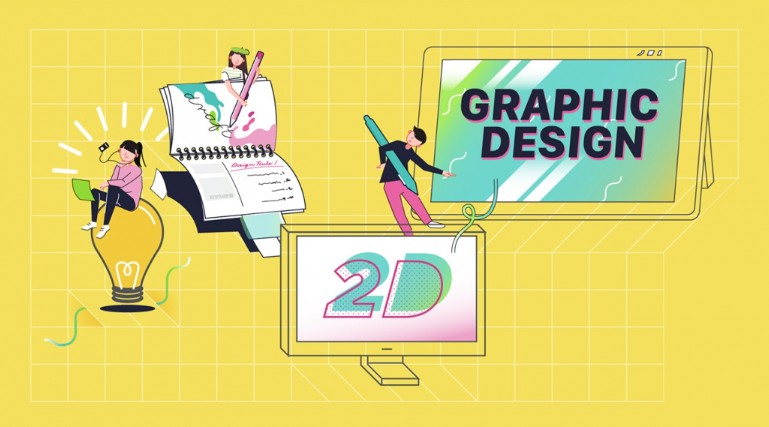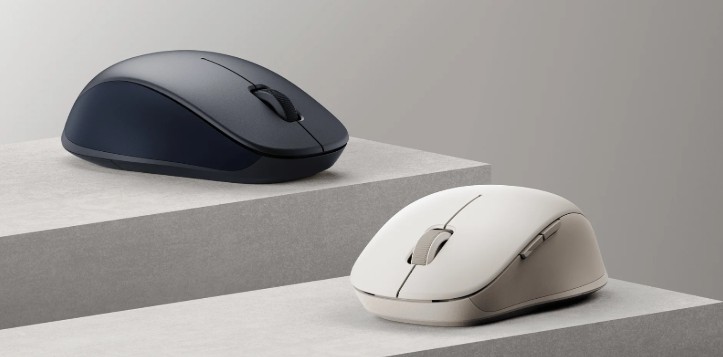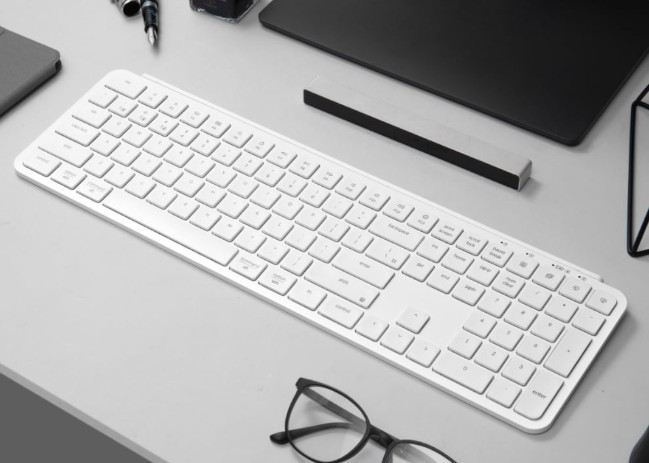Best Selling Products
Discover From A-Z About The World Of 2D Game Graphics
Nội dung
2D graphic design, short for Two-Dimensional Design, is the art of creating images and graphics in a two-dimensional space. In this space, there is only width and length but no depth, creating the flat images we often see in books, on computer screens, and many other applications.

Explore the world of 2D graphics - an endless creative space where ideas become reality on a two-dimensional plane. From graphic design, architecture, to the gaming industry and animation, 2D is the foundation for unlimited potential. Let's explore with SaDesign the definition, applications and benefits of 2D to open new doors for your imagination and creativity.
1. Basic concepts of 2D
2D graphic design, short for Two-Dimensional Design, is the art of creating images and graphics in a two-dimensional space. In this space, there is only width and length but no depth, creating the flat images we often see in books, on computer screens, and many other applications. This makes the display of information and art simple but still creative and expressive.
2D graphics products include technical drawings, logo design, animation and video games.
2D graphics are the basis of many creative fields, from media to entertainment, helping to convey messages effectively and visually. The development of technology has opened up countless new possibilities for 2D design, from creating works of art to developing unique and engaging video games.
.png)
2. Applications of 2D
2D graphics, with its simplicity but flexibility, have become indispensable in many areas of life and industry. Here are some typical applications of 2D graphics:
Graphic and communications design: Create artwork, logos, billboards, and other communications products.
Game Development: Program and design 2D video games, from classic arcade to educational games.
Architecture and engineering: Technical drawings, simulations of house designs, machinery and construction works.
Animation and Film: Produce animated films, commercials, and educational clips with 2D motion art.
Web Design and User Interfaces: Create fun, easy-to-use web interfaces, icons, and backgrounds.
In addition, 2D graphics are also applied in education and medicine to simulate and illustrate complex concepts, making learning more vivid and easier to understand.
3. Benefits of 2D design
2D (2-dimensional) and 3D (3-dimensional) design have distinct advantages, depending on the specific use and context. Here are some of the key benefits of 2D vs. 3D design:
.png)
Time to complete: 2D designs typically require less time to complete than 3D designs, thanks to the simpler and fewer step-by-step process.
Simplified operations: Operations in 2D design are less complex than in 3D, making creation and editing easier and faster.
Flexibility: 2D designs are easy to export and compatible with a variety of platforms, from web to print, without requiring too much conversion.
Software and hardware requirements: Compared to 3D, 2D design often requires less specialized software and lower hardware configuration, saving on initial investment costs.
2D and 3D design each have their own distinct advantages and are not interchangeable in all situations. Choosing between 2D and 3D depends on the specific goals, resources, and requirements of the project.
4. Popular 2D design tools
2D design is an important field in the graphic design industry, and there are many software tools that help with this work. Here is a list of some popular 2D design tools and their outstanding features:
.png)
Adobe Photoshop: The leading photo editing software, widely used for image editing, graphic publication creation, and website design.
Adobe Illustrator: Professional vector graphics design software, suitable for creating objects, logos, banners, and other graphic designs with high image quality without worrying about breaking when zoomed in.
Adobe InDesign: Professional page layout software, used to create works such as flyers, posters, magazines, and e-books.
CorelDRAW: Vector graphics design software, known for its powerful vector illustration capabilities and support for a wide range of web graphics tools.
AutoCAD: The leading engineering design software, specializing in 2D and 3D design and engineering tasks, very popular in the fields of construction and architecture.
Sketch: Graphic design software specializing in web and user interface design, featuring a diverse toolset and precise vector editing functionality.
Gravit Designer: Free vector design tool, cross-platform support, suitable for both beginners and design professionals.
Each tool has its own advantages and special features, suitable for specific needs and requirements in the field of 2D graphic design. Choosing the right tool will help increase work efficiency and achieve the desired design results.
Buy Genuine Licensed Software at Cheap Prices
5. How to create and edit 2D images
To create and edit 2D images, you can use a variety of tools and software, from open source animation software to professional photo editing tools. Here's a basic guide to getting started.
.png)
Using Synfig Studio for 2D Animation
· First, download and install Synfig Studio from its main website.
· Once installed, you will encounter the application interface which includes Canvas, Toolbox, and Time Tracker where you can create and edit 2D animations.
· The canvas is where you sketch and apply effects to your image. The toolbox provides all the tools you need to manipulate objects.
· Use the Timeline Panel to adjust keyframes and apply changes over time.
Edit 2D images with Aseprite
· Download and install Aseprite, a great tool for Pixel Art and animation editing.
· Aseprite offers many effects, layers management, and the ability to open and save GIF, PNG,..
· Launch Aseprite and use the available tools to create or edit your animations.
Both of these tools offer a wide range of powerful features that will help you create amazing 2D artwork. Depending on your specific project needs, you may choose to use Synfig Studio for 2D animation or Aseprite for Pixel Art and animation.
6. Future 2D design trends
According to experts, 2D graphic design will become more important than ever in the coming years, with the transition from paper to digital and web interfaces. Technology will play a big role in the way we communicate through design, promising a golden opportunity for the graphic design industry. This requires graphic designers to prepare their knowledge and skills thoroughly to meet the changing needs of the market.
.png)
Sustainability in design
Next year, design trends will emphasize sustainability, with earthy color palettes, organic textures, and eco-friendly materials. Brands that support green initiatives will be highly regarded.
Experience augmented reality (AR) and virtual reality (VR)
AR and VR technology is increasingly accessible and will be harnessed to enhance user experiences, with a combination of the tangible and the digital.
The Revival of Maximalism
Maximalism, with its bold, vibrant colors and intricate patterns, will return, marking a liberation from the restraints of minimalism.
Dynamic Typography and Manual Typography
Dynamic typography and handwriting will become increasingly popular, adding a personal and unique feel to designs.
Nostalgia and Retro Style
Design trends inspired by the past, like the 90s or 80s, will be popular, giving a nostalgic feel while still maintaining a modern essence.
7. Difference between 2D and 3D
2D images are described in two spatial dimensions: width and length, while 3D images are described in three dimensions: width, length and height, plus depth, creating a more vivid and realistic feeling.
.png)
Main features:
2D shows images on a flat surface, while 3D allows images to be shown with depth and volume.
Design software: 2D uses Adobe Photoshop, Illustrator, while 3D uses Maya, 3DsMax, Blender.
Time to complete: 2D design is usually faster than 3D because of the greater complexity and detail of 3D.
Operation and flexibility: 2D is simpler and easier to export files on many different platforms, while 3D requires more conversion operations and larger file sizes.
Application:
2D is popular in advertising, animation, and web design, while 3D is favored in film production, video games, and architectural simulations.
Both 2D and 3D design play an important role and are widely applied in many different fields, depending on the purpose of use and specific requirements of the project.
Explore the world of 2D that opens the door to unlimited creativity, from graphic design, mobile applications to game programming, all prove the power and flexibility of 2D. Start your creative journey with 2D today to explore, create unique works and enjoy unexpected benefits.












































